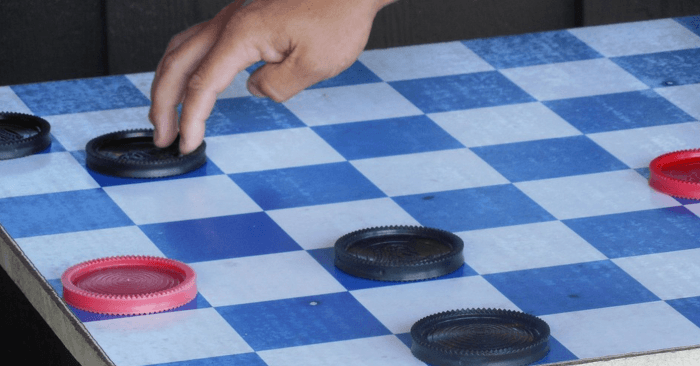
Exercise your Brain - Traditional Board Games for Kids - Whizpa
Board games can be played both as a fun leisure activity or as part of a more formal competitive environment that requires structured training. Either way, board games - especially those that involve strategic planning and devising tactics - are extremely beneficial to children. In this article, we will introduce a few popular and stimulating board games that are sure to get kids exercising their brains!
Reversi/Othello
Reversi is believed to have been invented by an Englishman in the late nineteenth century. The modern version of the game was popularised by a Japanese man called Goro Hasegawa, who named the game Othello with reference to Shakespeare’s famous play of the same name. Hasegawa later also established championships and associations for the game.
An Othello Board. Source: Amazon
Designed for two players, the game is played on an 8x8 grid with 64 discs that are typically black on one side and white on the other. Each player takes a colour, and takes turns placing their discs on the board with their own colour facing up. On their turn, each player needs to place a disc so that their opponent’s pieces are bookended in a straight line between two of their own discs. They can then flip over the opponent’s pieces that are between their two discs to change them into their own colour. The player with the most discs of their colour on the board wins the game.
With its simple rules and mechanics, Othello is an easy game for children to pick up. At the same time, however, it challenges kids to think strategically and plan ahead - thus offering a play experience that is both fun and stimulating.
Xiangqi / Chinese Chess
Appealing to everyone from grandparents to children, Xiangqi or Chinese chess is immensely popular across all generations within Chinese society. Designed to simulate a battle between two armies, Xiangqi is a two-player game played on a board with a grid formed from nine vertical lines and ten horizontal lines. Across the middle of the board, a "river" divides the two sides and acts as a boundary.
Young Xiangqi players in a match with blind players, as part of a charitable initiative. Chess can indeed connect people! Source: Hong Kong China Chess School
Similar to Western-style chess, Xiangqi features a variety of pieces that serve different roles and have various restrictions on their movements. Each player has a General, two Advisors, two Elephants, two Horses, two Chariots, two Cannons and five Soldiers. The objective of the game is to capture the other side’s General. Given the movement restrictions placed on different pieces, players are challenged to devise tactics to checkmate their opponent’s General.
The popularity of Xiangqi is evident all around Hong Kong, where people can be seen playing the game in parks all over the city. To learn how to play Xiangqi, look for Chinese chess classes on Whizpa such those offered by C for Chess or Hong Kong China Chess School.
Go / Baduk
If your children are ready for a more challenging type of chess, they may be interested in learning one of the most complex chess games in the world - Go!
Coach Park Youngwoon instructing students immersed in a Go game. Source: YW Baduk Academy
Go, also known as Baduk in Korean, is said to be the most ancient and complex game in the world - perhaps it is its complexity that has enchanted generations of enthusiasts. It is intuitive to assume that a complex game also has complex rules, but Go has surprisingly simple rules. In this two-player game, one player uses black stones, and the other uses white stones. The players will take turns placing their stones on the points (or intersections) of a 19x19 grid. A vacant space next to a stone is called a liberty. If stones or groups of stones no longer have liberties adjacent to them, i.e. they are surrounded by opponent stones, all the stones are captured and removed. The goal of the game is to surround as much territory on the board as possible.
Although the rules are relatively simple, the strategies required can be very complex. Strategies such as keeping one’s stones connected while keeping others disconnected, invading the opponent’s area, reducing the opponent’s area of influence, sacrificing one area to protect another strategic area of influence, and so on, make Go a virtual battleground of intellect on the board!
Given the complexity and fun of Go and chess games, there are many classes in Hong Kong that offer systematic guidance to children, to help them maximize their learning and enjoyment of the games.
With Go, many classes teach children to start playing on 9x9 boards. Classes like those offered by YM Baduk Academy and Yeast Chess, follow a systematic pattern of course design. In elementary classes, children will become familiarized with some simple but crucial Go concepts such as the concepts of stone liberty or capturing stones from the opponent. Children will also be guided to think a few steps ahead before placing a stone - a skill crucial for executive planning transferrable to everyday life as well. The more advanced concepts of holistically evaluating the whole Go game and fine-tuning strategies are taught in more advanced classes. Parent testimonials indicate that Go can help kids become more capable of planning and concentrating for a prolonged period of time.
YW Baduk follows a systematic teaching approach.
Chess can provide a basis for children to experience triumphs and defeats repeatedly through each game. As with chess classes, Go classes let children practice good sportsmanship by teaching them to rejoice in victory and handle defeat with poise - children will be able to apply these learnings from the board game to real life.
To see what Go classes are available in Hong Kong, please go to whizpa.com. Please leave a review of your children’s Go or chess classes to share your experience! Happy boardgaming!








